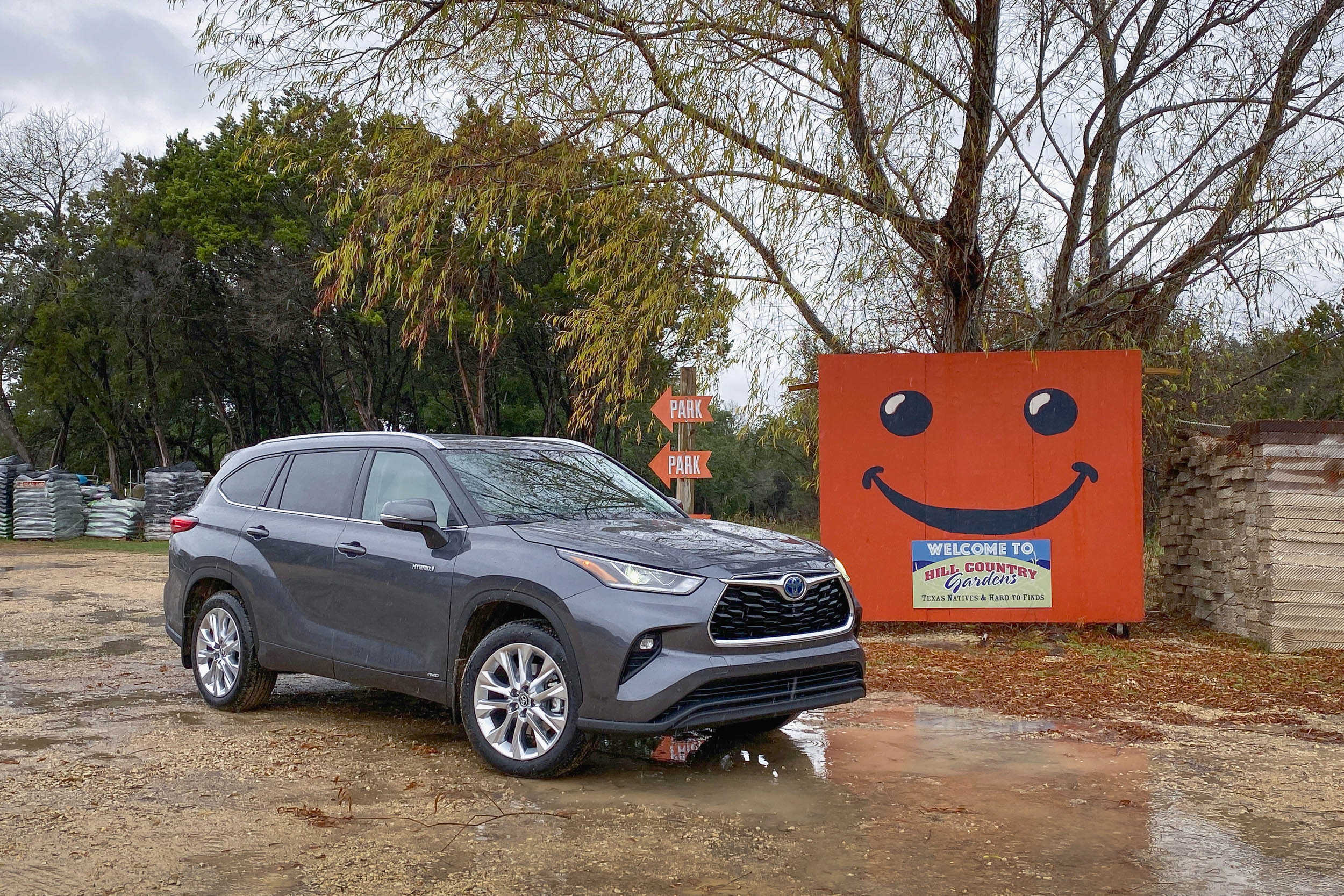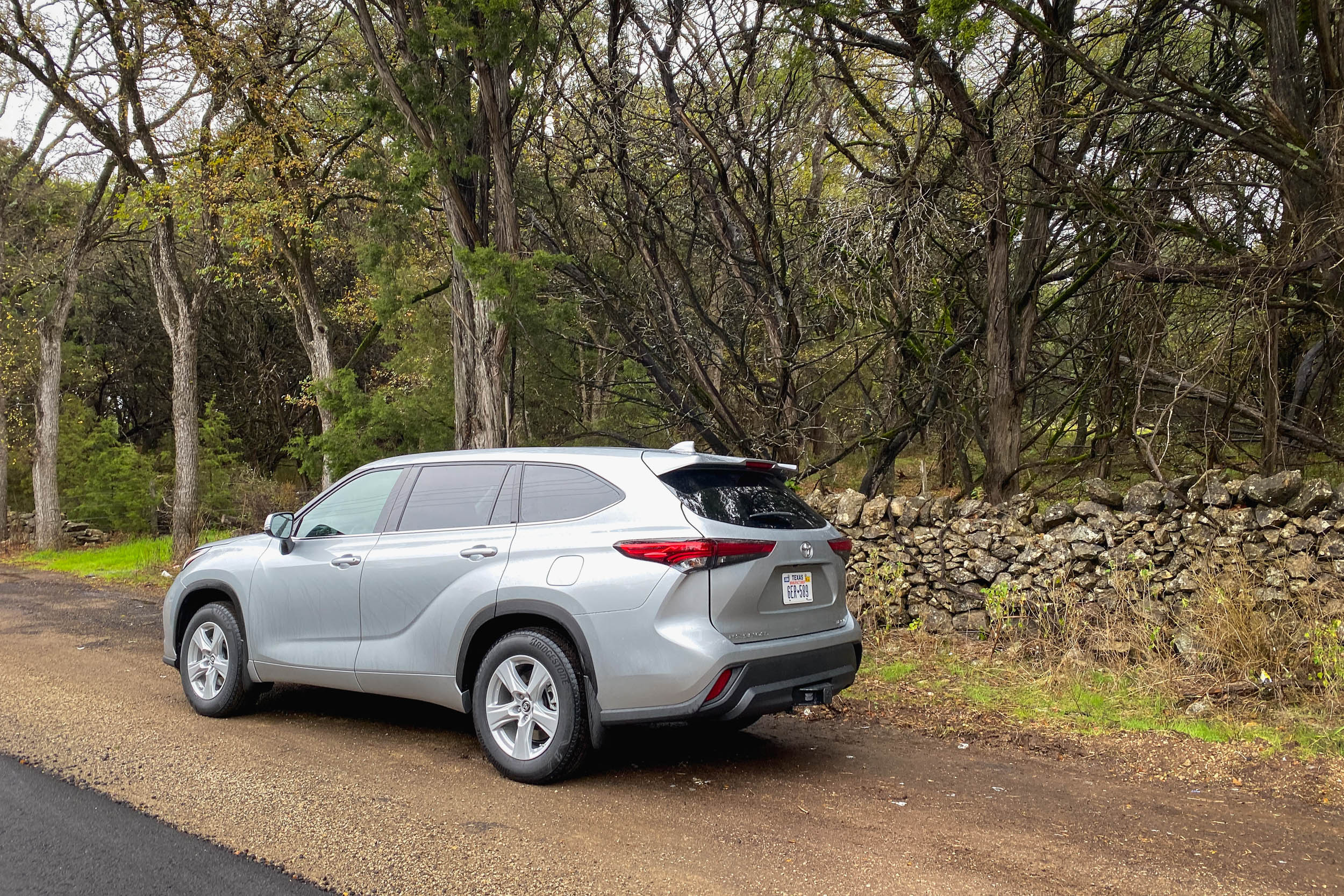
Words and photos by Jill Ciminillo
SAN ANTONIO, Texas – The 2019 Toyota Highlander was starting to look tired. The design, the technology and the interior materials all needed a serious upgrade – especially when facing strong new contenders in this segment like the Hyundai Palisade and Kia Telluride.
So, for 2020 Highlander gets a major overhaul.
But the question is: Did Toyota go far enough?
My initial answer is no, they did not – at least not at the base levels.
BASE LEVELS ARE BASIC
We didn’t have the opportunity to drive the base L trim, but we did get some time with the LE. While Toyota did a nice job with soft-touch materials and overall interior design, the seating materials were still a bit rough and the seats themselves were stiff – kind of like sitting on cardboard.
Plus, it smelled cheap. I know that’s a weird thing to say, but the LE trim had a funky plastic scent that likely had to do with seating materials and would (hopefully) dissipate with time. But it was very noticeable and would be an immediate turnoff to me if I were test driving it. Both my drive partner and I wrinkled our noses upon getting into the vehicle and made a similar comment about the smell.
And that’s at roughly $37K.
For price point comparison, the mid-grade Palisade starts at about $34K.
In my book, the Highlander doesn’t get any extra features to warrant a higher price tag.
At the mid-level trims, both vehicles have standard safety features, Apple CarPlay/Android Auto, passive entry, push button start and blind-spot monitoring.
DESIGN IMPROVEMENTS
The exterior design is updated and modern with some nice character lines, and the grille is definitely less controversial than the previous generation. So, the overall effect is handsome but not groundbreaking.
The interior loses its tired look for an updated dash and center stack. Toyota has done an excellent job integrating the infotainment screen as a design element, and both the base 8-inch and available 12.3-inch screens look like they’re supposed to be there – rather than tacked on.
However, the first thing my drive partner said when we got into the vehicle is that the dash accent, which bleeds into and surrounds the infotainment system, reminded him of a pizza peel (or spatula) used to shovel pizzas in and out of the oven. I can’t get that image out of my head.
And I’m now hungry for pizza.
MORE, PLEASE (NOT PIZZA!)
Toyota also did a nice job of adding essential technology such as Apple CarPlay/Android Auto, 5 USB ports, a birds-eye camera, head-up display, digital rear camera display and park assist with automatic front and rear braking.
Plus, the Toyota Safety Sense 2.0 suite of features are now standard.
However, I think Toyota missed the opportunity to push the envelope further.
The Hyundai Palisade and Kia Telluride both add a cool blind view monitor, which puts a digital image of the blind spot in the instrument panel when a blinker is activated. They have also added safety technology that will send an owner a text message if something moves inside the vehicle after locking it.
Toyota needed some kind of unique innovation here that would not only propel it above the two Korean all-new three-row SUVs but also justify the higher price.
THIRD-ROW WOES
The third row is also a let down.
Access is easier in the Palisade and Telluride with their one-touch button to move the second-row seats. In comparison, the Highlander makes use of a lever and your own personal torque to move the middle row. It wouldn’t be easy for a child to do this alone.
Additionally, though Highlander adds more front/back slide to the second-row seat to accommodate extra legroom in the third row, the seats aren’t comfortable as even my short legs didn’t rest flat against the short seat bottom. Instead my knees jutted off the cushion and left me sitting in something that looked like a fetal position.
Thus, even I felt tall climbing to that third row, and I’m the size of an average 10-year-old.
POWER EQUATION
But moving away from design and technology, the Highlander holds its own against the Korean duo. It’s equipped with a 3.5-liter V-6 engine that delivers 295 horsepower and 363 pound-feet of torque. Both of those numbers are a smidge higher than Palisade and Telluride.
The big win for Highlander, however, is it has something to offer that neither Palisade nor Telluride do: A hybrid.
This is the thing that helps edge out other three-row midsize SUV competitors because very few offer a hybrid variant – especially from mainstream brands. In fact, if you’re looking for a three-row hybrid, your only options are in the luxury category and include the Volvo XC90, Acura MDX and Lexus RX-L 450h.
HYBRID HIGHLIGHTS
The 2020 Highlander Hybrid gets the next-generation Toyota Hybrid System with a 2.5-liter, 4-cylinder engine paired with two electric motors. It’ll have a combined power output of 243 horsepower, have an estimated combined fuel economy of 36 mpg and go about 600 miles on a single tank of gas.
That’s a big deal for a three-row SUV.
Additionally, it’s the only hybrid SUV to offer hybrid technology on a front-wheel drive vehicle.
After driving both the gasoline and hybrid models, I prefer the hybrid for its smooth acceleration. Even though it has less horsepower than the gasoline model, it feels faster. Not drag-strip fast, mind you, but beat-the-guy-on-the-right-at-a-stoplight fast.
This is certainly due to the immediate electric boost produced by the hybrid powertrain.
Another high point: The switch between gasoline and electric-only operation is fairly seamless. In other hybrids, you often feel the vehicle shake or the gas pedal vibrate when the switch happens, but there were a few times in the Highlander Hybrid where I had to check my gauges to see if the engine was on.
While I like the feel and efficiency wrought by the hybrid, it is worth pointing out that the engine is noisy under hard acceleration. After the silence that comes with hybrid stops and even-keeled cruising, the vibration and high-pitched whine is a rough juxtaposition.
Overall, however, ride and handling in the Highlander is what you’d expect from a three-row SUV. It’s planted on the highway, and though I wouldn’t describe it as nimble, it doesn’t drive like a boat either.
TRIMMINGS
There will be nine total trims for the Highlander – five on the gasoline model and four on the hybrid. The L is the only variant that does not get a hybrid. Every level will have front-wheel drive standard with all-wheel drive available. The breakdown is as follows with pricing in the format of gasoline/hybrid.
- L: $34,600
- LE: $36,800/$38,200
- XLE: $39,600/$41,000
- Limited: $43,650/$45,050
- Platinum: $46,850/$48,250
Destination is not included in the above pricing, and is an additional $1,120. If you want AWD, that will cost you an additional $1,600 for L, LE and XLE trims and $1,950 on the Limited and Platinum trims.
THE VERDICT
Though the 2020 Toyota Highlander might have a hard time competing against the likes of Hyundai’s Palisade and Kia’s Telluride, it has an undeniable point in its favor: name recognition.
Highlander has been around since 2001, and the Toyota name itself is synonymous with stalwart reliability. The hybrid option is another huge benefit to choosing the Highlander.
At the end of the day, the new Highlander is a nice vehicle and I liked it – especially in the top-tier trims. But if you aren’t tied to a brand, you might find something you like better at another brand that costs a little less.
Editor’s Note: Driving impressions in this review are from an invitation-only automaker launch event that allowed special access to the vehicle and executives. Toyota covered our accommodations, meals and transportation costs.



































